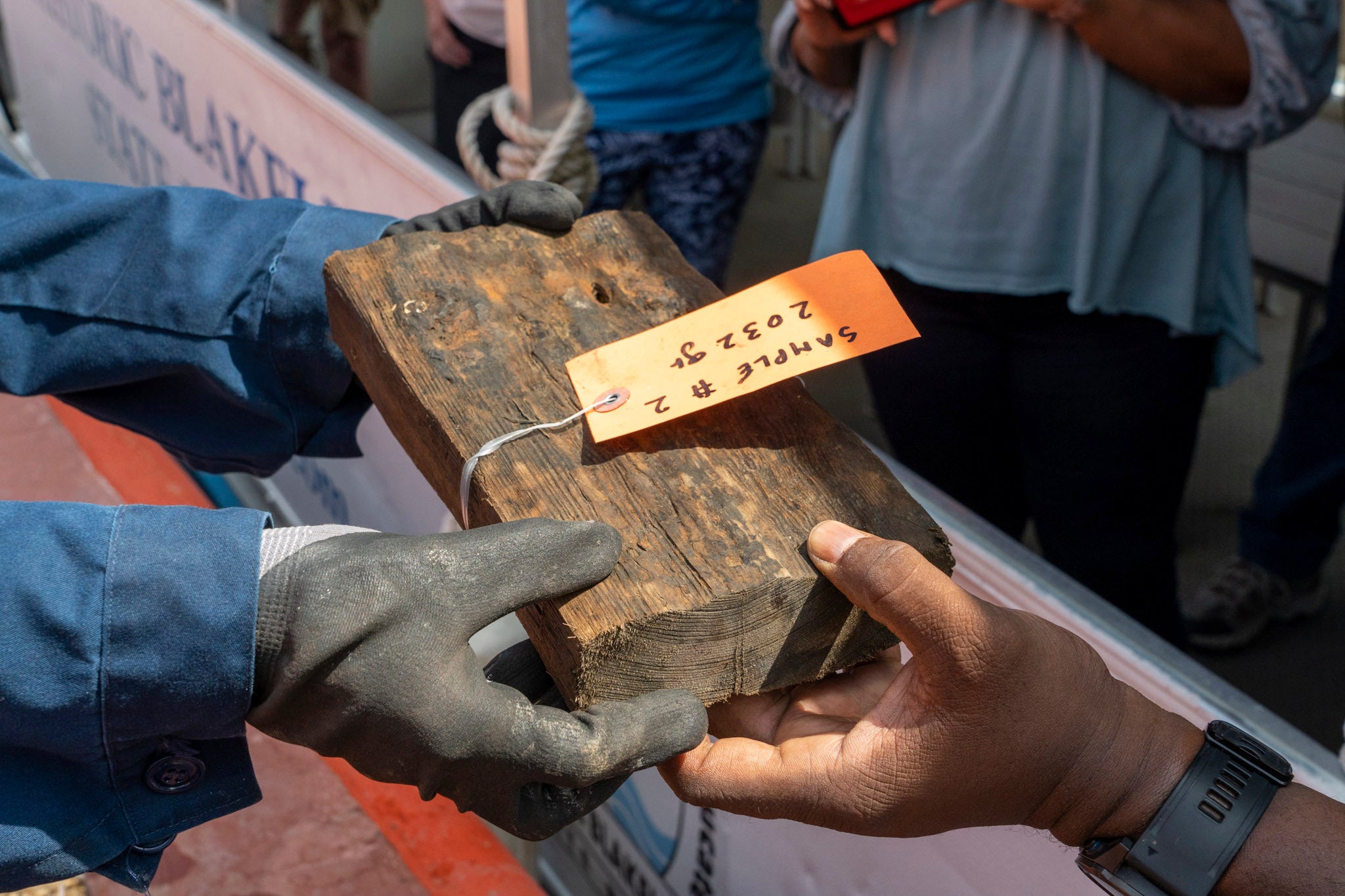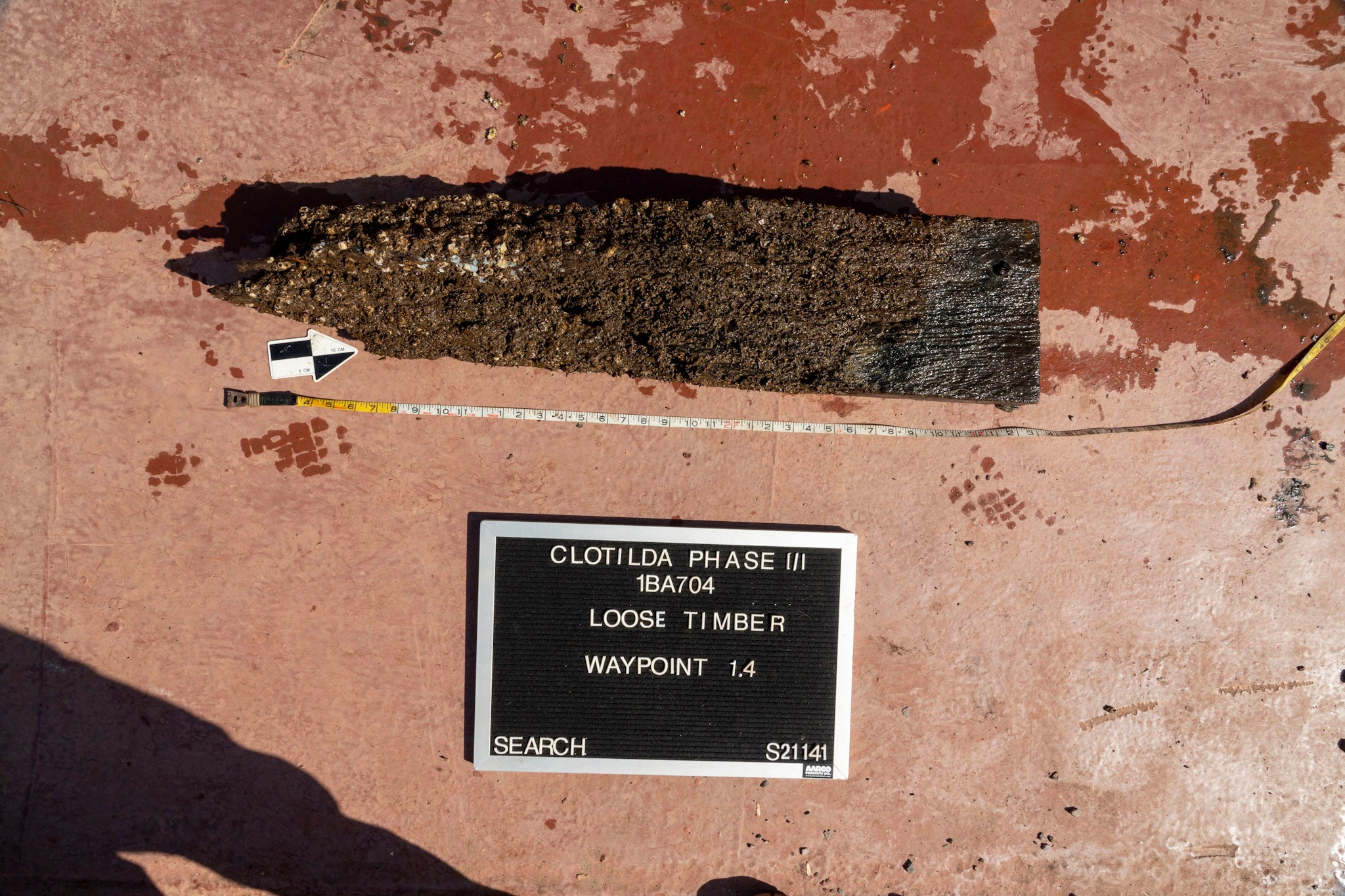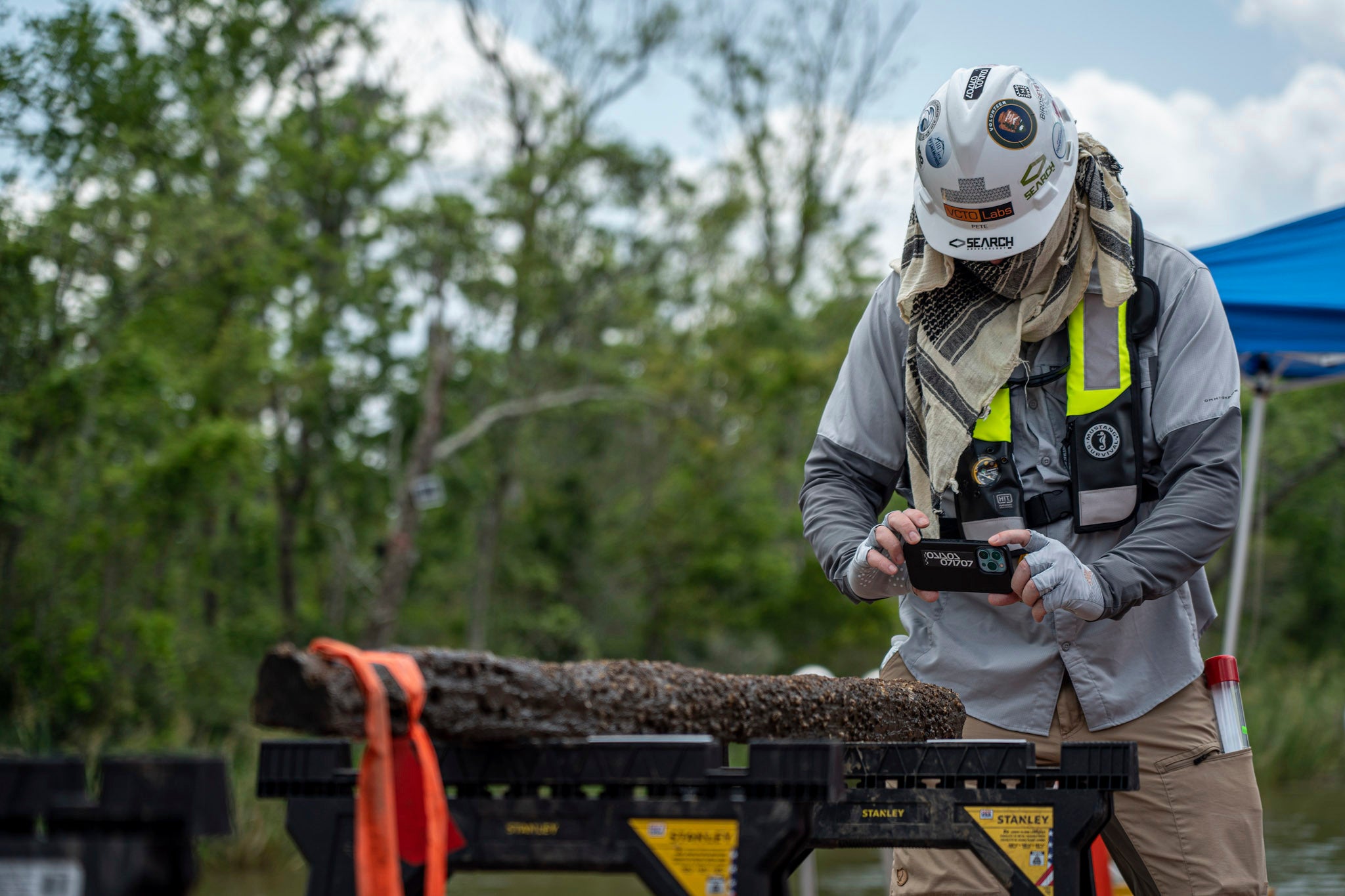Last known slave ship to the US should stay underwater to preserve ‘crime scene’, experts say
Clotilda is the last known ship to bring enslaved people to the United States from Africa
The last known slave ship to travel to the United States is too “broken” to be pulled from the murky waters of the Alabama Gulf Coast and should stay underwater to preserve the “crime scene,” a task force of experts announced following a yearslong investigation.
“There is no other site in the world that presents such physical evidence as the Clotilda,” James Delgado, a lead marine archeologist, said about the investigation. He said the priority is preserving that physical evidence.
“The Clotilda is the scene of the crime, so everything we did was in that crime scene investigation manner.”
The Clotilda, which was the last ship known to transport enslaved Africans to the US, had been broken in half while underwater by a large vessel and severely eroded by bacteria, the Alabama Historical Commission said Thursday.

The Alabama Historical Commission led the task force of archaeologists, engineers and historians who worked on the state-funded $1 million investigation.
On Thursday, the task force presented photos of some charred remains of the hull that were extracted throughout the investigation - evidence that supported the story documented by historians and community members for decades that the boat was burned to hide evidence of the crime of transporting people from Africa.
A 500-page report states that the “responsible” way to memorialize the ship is to protect it under the water where it was discovered in 2019. Instead of an excavation, the report recommended a plan that would preserve the structure underneath the water by installing large pillars around the ship to protect it from other ships and vessels.
It was unclear how well the ship had weathered the over 160 years underwater. Some had hoped it was intact enough to be fully excavated and turned into a museum on land.
"Museums have power, and that ship loses its power if it is sitting in the water," said Ben Raines, a former local reporter who wrote a book about the Clotilda entitled The Last Slave Ship: The True Story of How Clotilda Was Found, Her Descendants, and an Extraordinary Reckoning.

In 1860, the ship, captained by William Foster, traveled to West Africa and illegally smuggled 110 Africans back to Alabama. Foster then attempted to burn and sink the ship to hide the crime.
Slavery was still legal at the time, but importing enslaved persons into America had been outlawed since 1808.
After the Civil War freed the survivors of the Clotilda, historical records show 32 of them bought land and established what is now Africatown, formally known as Plateau, Alabama, about three miles north of Mobile, the Associated Press reported.
Africatown is now the only surviving community in America founded by Africans, according to a 60 Minutes report that aired last year. Some of their descendants still call it home.
Raines said that a museum would be a significant resource to all descendants of the enslaved and could bring much needed revenue to the Africatown community. Many residents who were at the meeting on Thursday agreed.
Raines said that he is still optimistic that the ship could be excavated and turned into a museum because the task force said that option is still scientifically and technically possible, the Associated Press reported.
Delgado did not rule this out, but said that process would require the ship to be disassembled “piece by piece, nail by nail,” and could compromise some of the remaining physical clues about the experiences of the enslaved people aboard.

That key historical evidence includes the lower hull where the enslaved Africans were held in captivity. Deep water dives revealed the confined chambers where 110 people were held remain mostly intact.
When Delgado shared these details at the meeting, Jeremy Ellis, the president of the Clotilda Descendants Association, became visibly emotional. Ellis is a sixth-generation descendant of Clotilda survivors Pollee and Rose Allen
“Since we’ve been able to learn more about what they really experienced and how small that cargo hold was and how on top of each other they were, it’s very chilling,” Ellis said.
“And it makes me want to continue the effort of reconciliation and healing for the descendants.”

